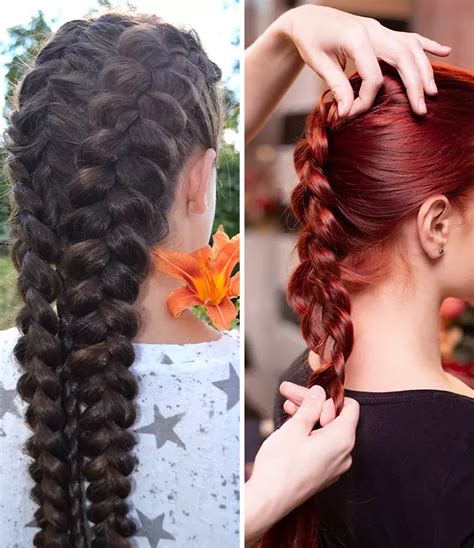Dutch Braids vs. French Braids: A Detailed Comparison
Introduction
Dutch braids and French braids are two popular braiding techniques that create intricate and elegant hairstyles. While they share some similarities, there are also key differences between them. In this article, we will explore the 5 major differences between Dutch braids and French braids, providing detailed descriptions, comparisons, and expert insights.

1. Technique and Appearance
Dutch Braids
Dutch braids, also known as “inside-out” braids, are created by crossing the strands of hair under instead of over each other. This technique results in a braid that is raised above the head, creating a voluminous and textured look.
French Braids
French braids, also known as “inside” braids, are created by crossing the strands of hair over each other. This technique creates a braid that is recessed into the head, resulting in a flatter and more traditional braid.
2. Volume and Texture
Dutch Braids
Dutch braids are known for their volume and texture. The underhanded crossing of strands creates a raised and voluminous braid that adds height and depth to the hairstyle.
French Braids
French braids are generally less voluminous than Dutch braids. The overhanded crossing of strands creates a flatter and more compact braid that is closer to the head.
3. Versatility
Dutch Braids
Dutch braids are highly versatile and can be styled in a variety of ways. They can be worn as a single braid, multiple braids, or incorporated into updos and other hairstyles.
French Braids
French braids are also versatile, but they are generally more suitable for creating traditional and classic hairstyles. They are often used for formal occasions and elegant updos.
4. Strength and Durability
Dutch Braids
Due to their raised structure, Dutch braids are more secure and durable than French braids. The underhanded crossing of strands creates a tighter hold, which prevents the braid from loosening or falling apart.
French Braids
French braids are less secure than Dutch braids. The overhanded crossing of strands can create a looser hold, which may result in the braid becoming unraveled or falling apart.
5. Skill Level
Dutch Braids
Dutch braids are generally considered to be more challenging to master than French braids. The underhanded crossing technique requires more precision and coordination, which can make it difficult for beginners to achieve a neat and even braid.
French Braids
French braids are relatively easier to learn and master. The overhanded crossing technique is more intuitive, making it suitable for both beginners and experienced braiders.
Conclusion
Dutch braids and French braids offer unique advantages and disadvantages, making them suitable for different hairstyles and occasions. Dutch braids are preferred for volume, texture, and security, while French braids are more traditional, versatile, and easier to master. Understanding the key differences between these two braiding techniques will help you choose the right style for your next hair adventure.
